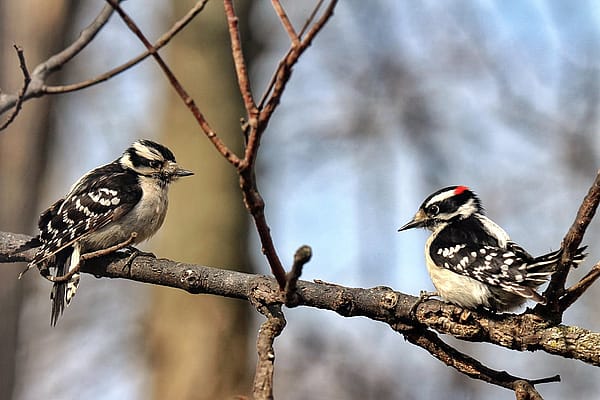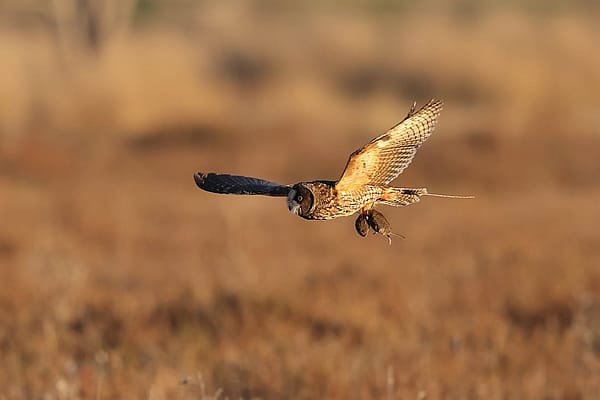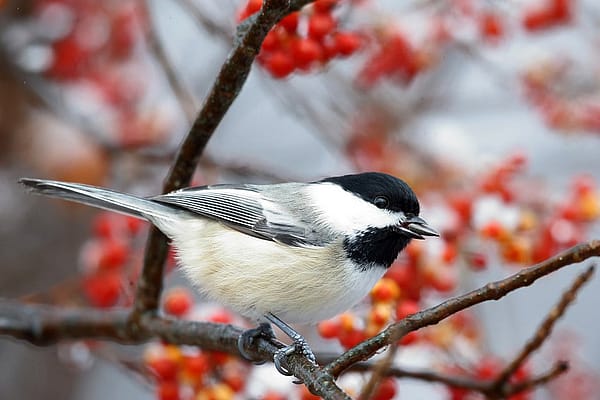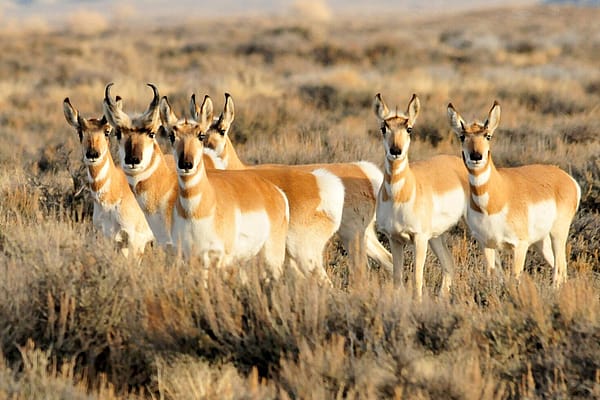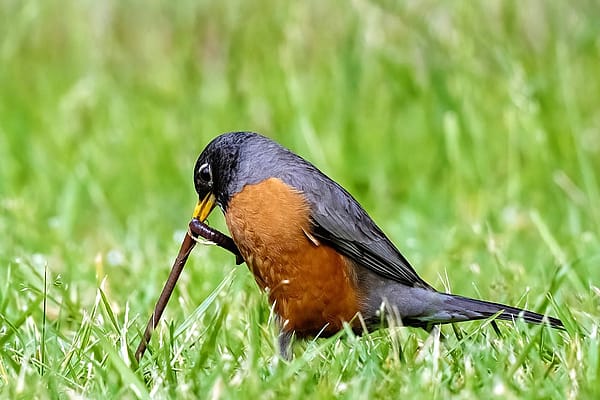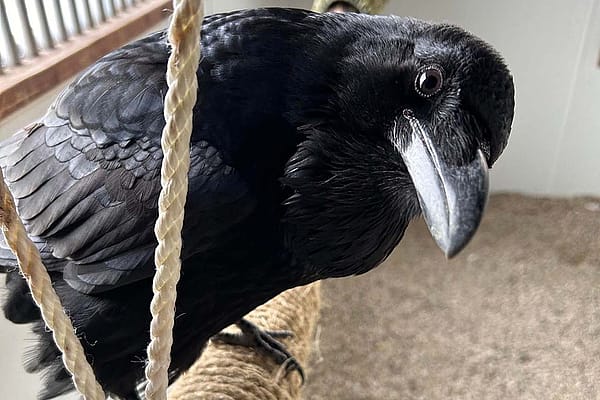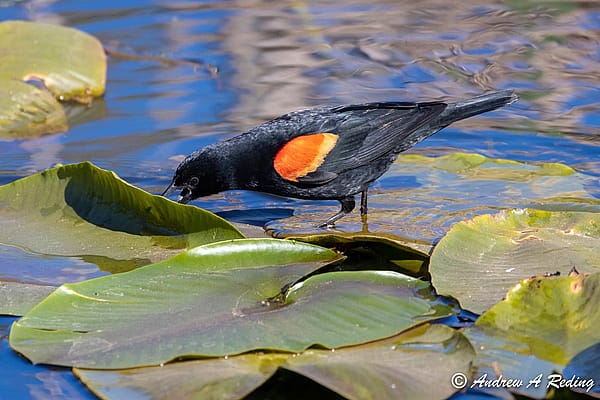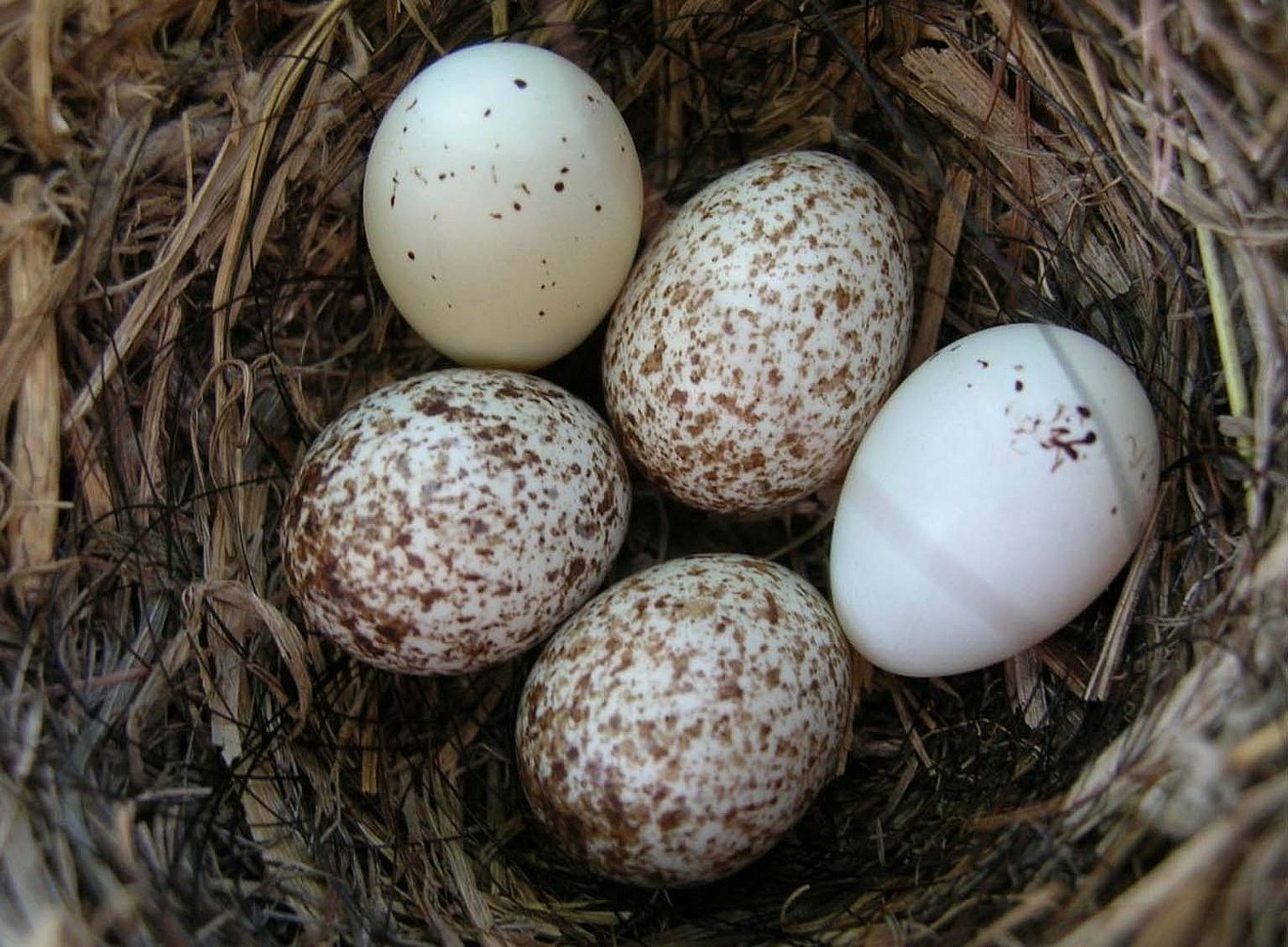
How Do Eggs Hatch?
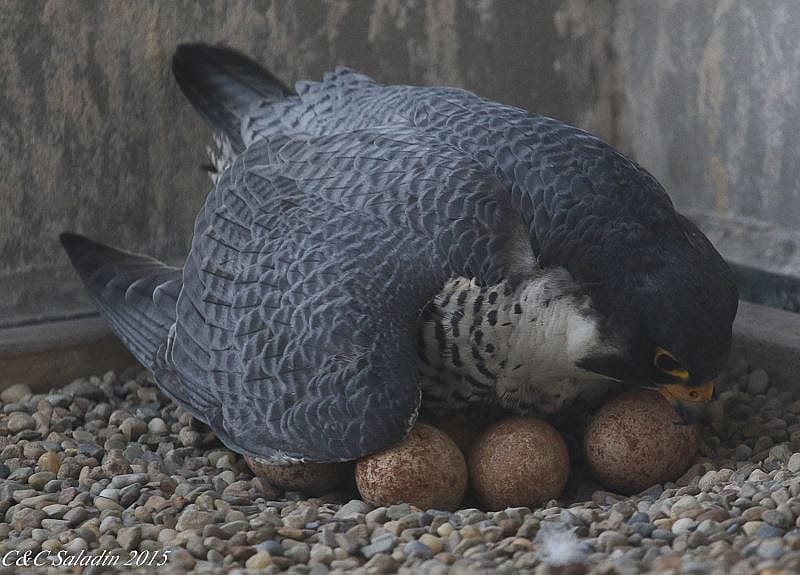
Eggs are a wondrous part of nature. They are kept warm by the parent, or parents, incubating them. They are carefully rolled to distribute the heat evenly and prevent the egg membrane from sticking to the shell. But how do the chicks manage to escape from their eggs and begin life as a new member of their species?
A number of things happen as hatching time draws near. As the eggs develop, water escapes through the shell in the form of water vapor. This water loss creates an air space at the broad end of the egg, where the chick is able to take its first breaths. With many species these first breaths happen three or four days before hatching. The shell has also become thinner as calcium from the egg shell is incorporated into the skeleton of the chick as it develops.
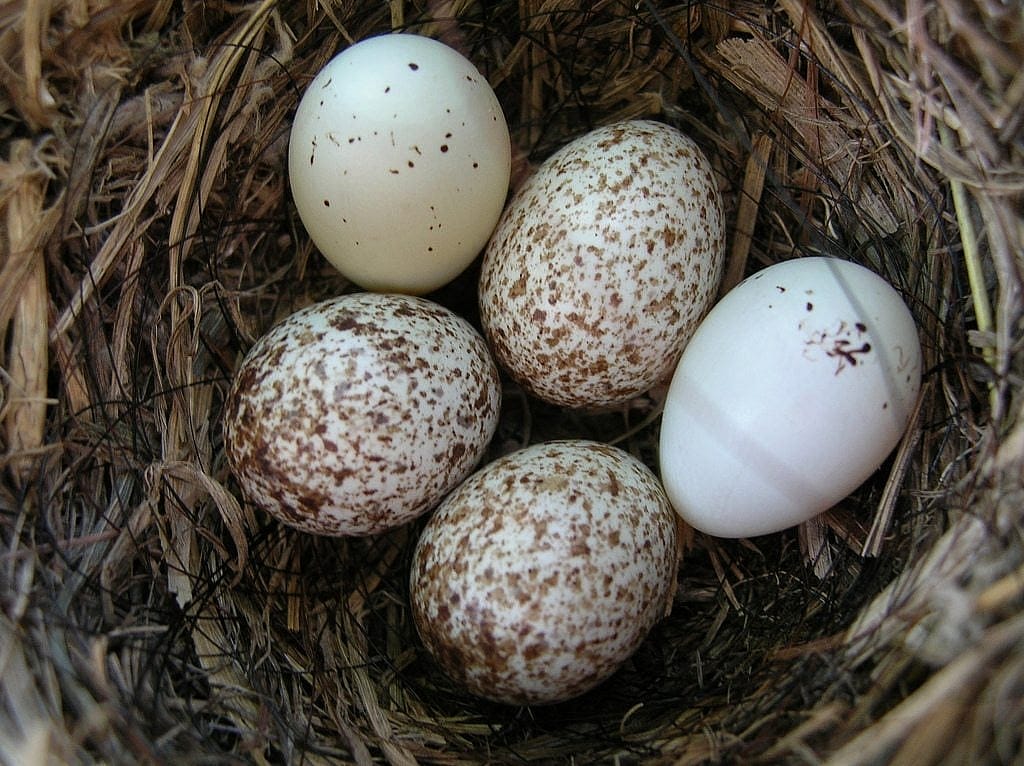
Chicks may begin communicating with their parents by calling from inside the egg. Researchers have reported that a day before hatching, goslings will produce alarm calls if their egg is upside down and the female goose will respond by rolling them upright. American white pelican chicks give a loud and clear distress call from inside the eggs when they are too hot or cold. This helps the incubating parent improve their incubating by turning and re-settling on the egg. Dr. Charles Preston tells us in his book, Wild Bird Guides: Red-tailed Hawk, that red-tailed hawk chicks will begin to call softly from inside the egg and the mother will answer.
Listen to this video capture of barred-owls chirping from within their eggs
A few days prior to hatching, the chick will develop an egg tooth, a small sharp calcium bump on the top of the bill.

As the chick uses its egg tooth, in conjunction with a special hatching muscle at the back of its head, it begins chipping away at the egg, creating a small hole, called a “pip.” Interestingly, both the egg tooth and hatching muscle are also present in reptiles.
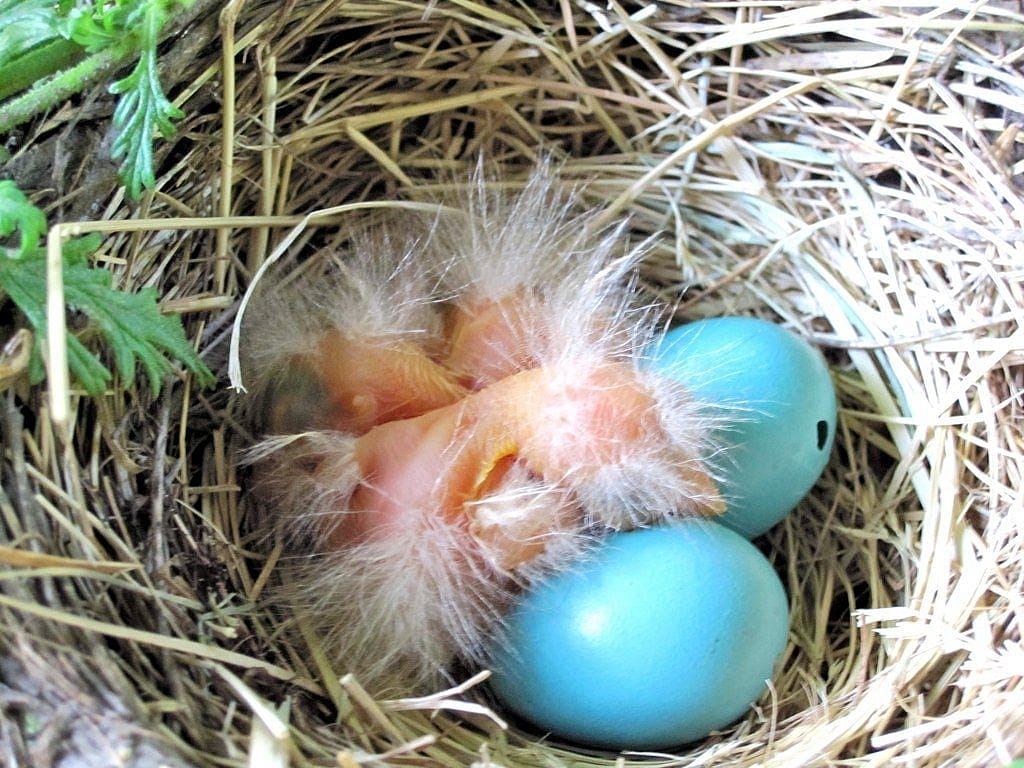
The pip creates a continuous supply of air as the process of hatching begins. From within the egg, the chick will begin scratching the shell in a circular path around the large end of the egg, weakening the shell. The chick is then able to burst the egg open. According to Amy Ries, who writes for the Raptor Resource Project, a preservation and educational project for all raptors, this process can take 12 to 48 hours. During this time the chick absorbs the yolk sac within its body and fully inflates its lungs. This hard work will leave the chick fatigued but it will have enough nourishment from the yolk sac that it will not need to be immediately fed. Because the hatchling is not yet able to regulate its own body temperature, a parent, usually the female, will tuck the hatchling under her for warmth and protection. In a few hours the chick dries off and appears as a fluffy ball. Within a period of time the hatching muscle will degenerate and the egg tooth will disappear. A new bird has entered the world!

Photo Credits:
Peregrine Falcon Incubating Eggs by C&C downloaded with permission from the Ohio Peregrine FaceBook Page https://www.facebook.com/ChadandChrisOhioPeregrinePage/?fref=ts
House Finch Eggs by Rich Mooney, Noncommercial Attribution NoDerivattives License https://www.flickr.com/photos/gonebirding/
Chick in hand demonstrating egg tooth by Chad Robertson, Adobe Stock Photograph through license paid for by the Buffalo Bill Center of the West.
Chicks and blue eggs with pip by Dean Shareskl, Noncommercial Attribution License https://www.flickr.com/photos/shareski/
Amsel Chicks by Maja Dumat, Attribution License https://www.flickr.com/photos/blumenbiene/
Written By
Anne Hay
Anne Hay has a Bachelor's degree in Elementary Education and a Master's in Computers in Education. She spent most of her working years teaching third grade at Livingston School in Cody, Wyoming. After retiring she began doing a variety of volunteer work for the Buffalo Bill Center of the West’s Draper Natural History Museum. Anne loves nature and has a concern for the environment. She believes that educating the public, so that they will have a better understanding and appreciation for the natural world, is very important. Because of this belief, volunteering at the Center is a perfect fit. She spends time in the Draper Lab, observing eagle nests for Dr. Charles Preston’s long-term research project on nesting golden eagles, writing observation reports of raptor sightings in the Bighorn Basin, and working with the Draper Museum Raptor Experience. Anne states that, “Having a bird on my glove, is one of my all time favorite things in life.”

